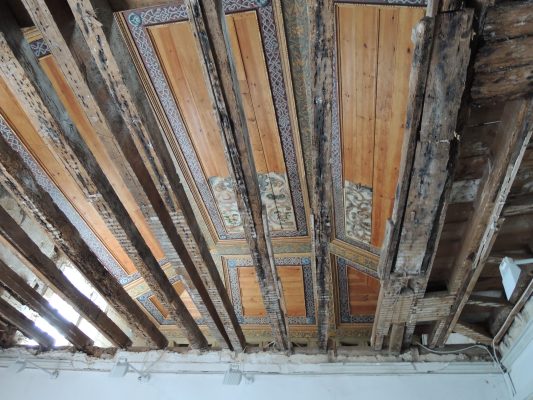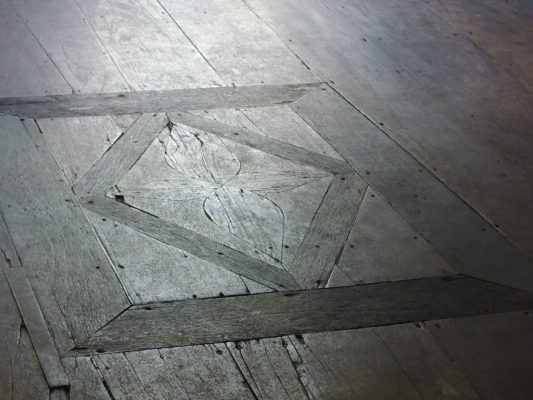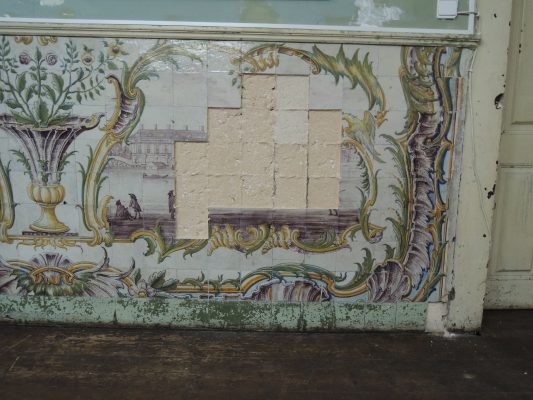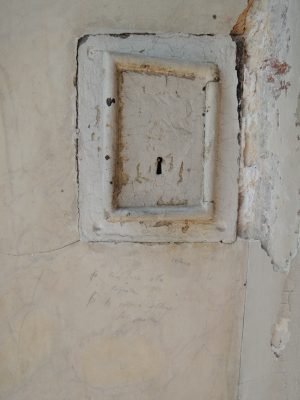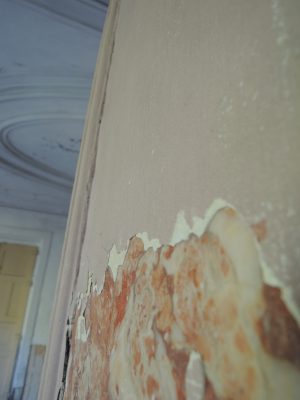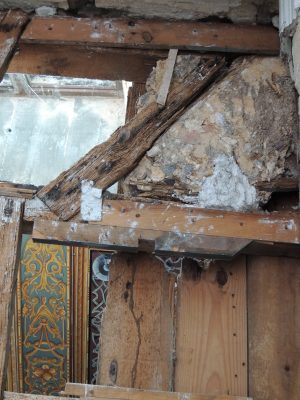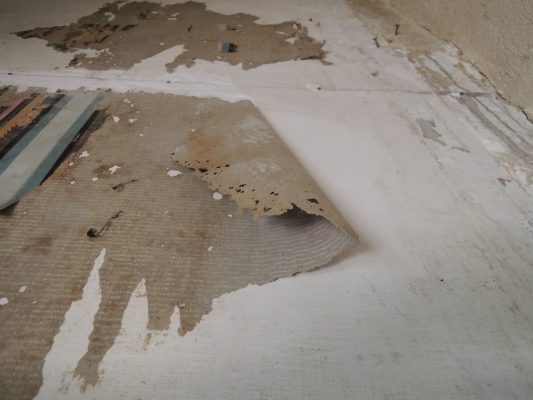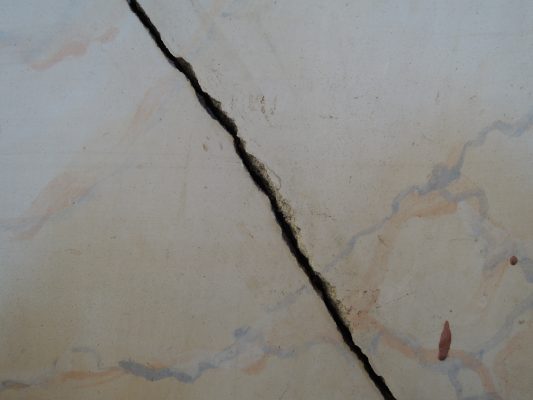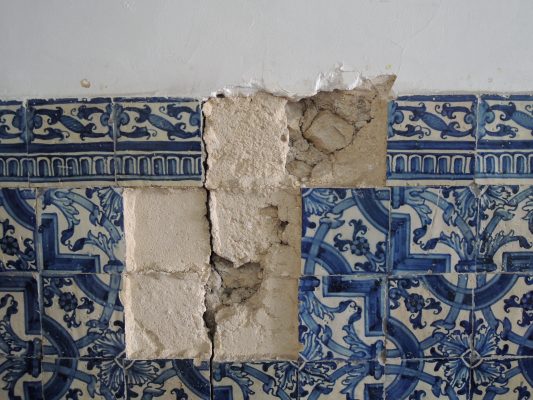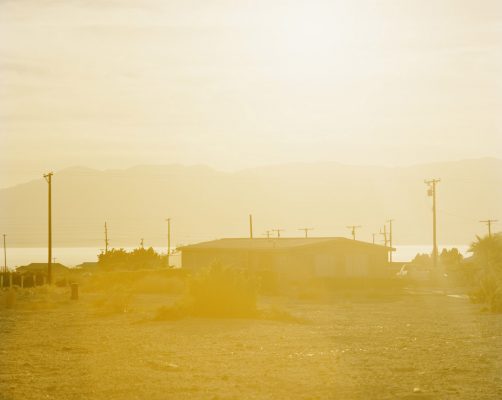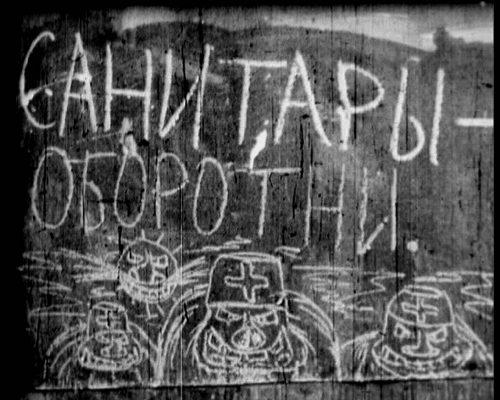How imagination remembers is twofold, an enfolded act of greed and ingenuity. I believe these impulses to be linked in a narrative sense.
Imagination is always greedy, never sated, or full, with the present. Imagination informs the imagineer: I need more! Just as the belly of the compulsive eater must be filled, so imagination can never be stuffed. Memory feeds famished imagination, but memory is a faulty mechanism: a selfish, subjective substance also requiring constant nourishment itself in order to function in any low state.
Memory cannot be entrusted with conservation. Conservation is a contrary motion moving backwards and forwards, pushing and pulling; forever the desire to move forwards, yet looking forever backwards to ensure it is going the right way, doing the right thing.
What conservation requires is proof. Conservation needs proof in order to be able to proceed with sureness.
This proof is not easy to come by.
Detailed systems of discovery and exposure need to be set in place in order to pinpoint such proof. Proof is, of course, always contextual and may only be seen as certain if it may be compared with other, very similar things, or processes. The definition of verisimilitude depends of course on what sort of proof is it you’re after.
The proof of Palácio Pombal is evidenced in what is left behind. I’m looking at the proof this was a palácio, not that it still is one. I accept. I’ve come here to experience closely, to try for clarity. And what is called into question, rather what arises as a question from my observations is: How can I be sure?
I’ve carefully read the information I was sent about the Palácio . I read it because I felt I should. I’m trying to forget what I read. I’m trying to forget history, in order to overwrite the fragmented, chronological proofs, kindly translated and supplied upon my request. This request to Mariana emerged from my doubt rather than my curiosity. We human creatures must find our match in scale.
***
Naturally, Palácio Pombal has forgotten more than it has remembered, this, is the material emotion of history.
Whilst such intimate physical traces of history – breath, perspiration, skin flakes, clothing fibres, and so on – attach to, and often attack, the actual historical fabric of this building, the palácio retaliates by forgetting much that it once knew. This amnesia is entirely necessary for its own survival, for protection from professional conservation: the palácio must not remember too much, for that which is remembered could be extracted by conservation.
The palácio prefers amateurs, because it wishes to conserve itself. This the palácio does by choosing for itself that which it will remember, and, of course, that which it will neglect to remember. By constructing its own memoir, the palácio retains integral, internal, history.
The palácio chooses to forget those who have done it harm. Those who have forced amendments, insertions, modifications and additions to its fabric; who have gouged fragile frescoes; who have chipped or prised off tiling; who have stolen; who have said too much; who have inserted thin-spit walls to unbalance its material logic; who have facilitated the accommodation of more people, more people who will, in turn, harm their host.
***
I am trying to act as a recording device. And such is the difficulty of hearing the in here properly I have had to stand here listening intently for quite some time, a few hours to be precise. I am standing here listening, even as I write this, trying not to acknowledge the scraping of my pen’s nib on paper.
Trying to listen to what the palácio wants to tell me, I’m sure most of it I can’t understand, or maybe I understand in my own way, perhaps succeeding only in getting it wrong. Complete accuracy in listening is not possible yet essential, making the effort after all is respectful towards the person, or thing, trying to tell you something.
I have often pretended to know or to understand what I did not know or understand. I have done this in an attempt to avoid embarrassment, or shame, in my lack of knowledge or comprehension, my ignorance. I continue to do this. But not today. It is a useless method to move through the palácio. To acknowledge publically you do not know, to try to listen, to understand in the moment is more useful and forceful.
Forceful, in that such listening responds with sensitivity to force.
***
I have promised Lourenco – a promise which I have kept except for a lone unsuccessful attack on a small square of plywood – I will not willfully, or even accidentally, damage the palácio this includes, incomprehensively: leaning against decomposing walls, glancing soluble paintwork or bruising soft mortar. All my work here must be done without touch. Knowing I cannot touch, only then do I realise there are no soft surfaces in the palácio, no fabric-lined walls, curtains, tapestries, nor rugs anymore, and yet the tiny fibres of such fabrics persist, pulling together so many strands of sensation. Despite my attention and diligence in not tampering with any of the physical substances of this building, I still manage to leave each day with a dusting of the place about me.
I carry miniscule particles of the palácio with me out into the streets of Lisbon.
Undressing in my room at night, as I pull my dress up above my head, the air is held still, composed in a nebula of fine motes seasoned by the palácio. I think I smell of the palácio, of history in a small way, and the last, the very last thing I realise as I am going to sleep is that the palácio is hard.
***
Nestled in my tight, cool corner in the staircase, I hear another working downstairs, in a back room I think. I haven’t met them yet I hear them.
The hard materials of Palácio Pombal make for an efficient amplifier, hardness being the better for sculpting and bouncing soundwaves. The palácio then as an amplifier, a marble cone allowing the owners and the servants to share the sonic sense of location.
Amplification as a matter of pride, of significance.
Traffic noise outside this stairwell, channelling traffic noise through ten windows, continuous, rounded sound guided upwards to this space through the hard pavements, the narrow tall streets themselves funnelling upwards towards me in a purposeful manner. These tall buildings, with little space for busy passage, the historic and the contemporary serving to throw shadow on their neighbours by virtue of height, and now the herding of sound, vehicles which were not imagined at the time of building the palácio, an unintended amplifier, and yet it acts. This un-intention acts. The streets changing historic function, pleasing of course. Marble, the amplifier within.
It would be too cosy to attempt to imagine how the voices of the past imbed themselves into soft and hard materials, how singing bowls exist across era and how this helps us to imagine how things used to sound: this is impossible. I search around the palácio, inspect it, and can to a large extent see how things used to look, but I can have absolutely no access to how the history of this place used to sound. The specific cadence, chatterings are neither familiar nor welcome to me, it would be unnatural to hear what the palácio has heard. All I am left with, my only potential strategy to locate sounds which have now past is to focus on sound’s path moving through this building, I cannot focus on the sounds themselves.
The function of the record is to be heard, it serves our ears, it doesn’t matter how we listen to it, as long as we do, as long as we hear what we are being told to hear.
Fascinating how one finds the process before one realises why one is doing it. I must listen to myself. I ask: Did the Marquês’ dogs frighten themselves when they barked?
***
In a space of this scale, with ceilings this high, my voice is still small. My Words. I am absorbed. My words are consumed.
My expiration will sink behind the stucco and wait … my breath will eventually leak out in floral flaking patterns … edged with bleeding brown … breathing outwards … Reaching towards breath. Feeling outwards through these walls not only for the breath of others but also for their words. What went into the walls in the past, what was breathed deep into their fabric remains today.
So, if these walls might gain their tongue and begin to speak outwards they would be reliant on whoever was present to tell them what language they were speaking. Whether the language was intelligible, or simply, a language by and for walls only.
What?
What was that?
I avoid leaning against these walls. I worry about what might come off. I worry these walls will powder me with the past. From me to them, and from them to me. The navy dye from my cheap tee-shirt has already insinuated itself about my shoulders where it lingers like a bruise. I do not want to add anything to here, I want to leave the palácio as I found it. I will not touch or lean against the walls. I do not want an exchange of concepts however real or imaginary to take place, for such an exchange would not be respectful.
***
A gift. Before I was born my father somehow came into possession of a Dansette record player, I’m sure he couldn’t have bought it in Belfast.
Mouth wine red, the Dansette lived in the attic, and was brought down just twice a year upon my tearful behest. Up close, the record player smelt of warm cardboard; a cheap construction exhaling immanent perfume, its own inner fibres desirous of communicating something of a personal nature to its user.
One day my father suggested performing a small experiment with the Dansette, he wanted to attempt to play a record on it with a sewing needle, instead of with the record player’s own stylus.
I was dispatched to locate and fetch a very thin sewing needle. I knew exactly where to look: our household only had two needles, one just right for sewing buttons back on, and one just right for darning socks and jumpers with wool. Easy choice. As I handed my father the sewing needle I wondered if he had performed this experiment before, or if the idea had just come to him that very day. I was dispatched to locate and fetch some cardboard, flexible enough to be bent, but stiff enough to hold a shape. I did not know exactly where to look, but reasoned through the natural placement of certain materials in our household, and made my way to the kitchen. A box of cornflakes. I slipped out the waxy bag of breakfast cereal, and returned the bag to its shelf in the kitchen cupboard, shaking out residual flakes from the dark corners of the cardboard box into the sink.
Smiling, my father methodically deconstructed and remodelled the box, flap by flap, from a thing three-dimensional, to two-dimensional, to a thing three-dimensional again: an improvised cone. We had no tape, so he kept the cone in shape by loosely compressing it in his hands without, at any time, actually crushing it.
From the six records we owned I chose and placed my favourite – the soundtrack of Chitty Chitty Bang Bang – on the black-ridged rubber turntable. The record’s diameter slightly exceeded that of the turntable below, overhanging evenly a quarter of an inch. I switched the Dansette on.
My father advised me on where, and how, to hold the sewing needle; between thumb and forefinger of course, lightly, close to, but not actually on, the needle’s eye, in order to better aid flexibility of movement, thereby reducing the chance of damage to the record itself. Cautiously, I tipped the sewing needle’s imperfect point, feeling inwards, towards the grooves, which I knew to be there but couldn’t really see. A miniscule quivering harmony emitted from the record’s surface, clinging low.
Nursing the cardboard cone in his hands, my father manoeuvered it over to where the needle engaged and inspired the record to sing, and, as the cone got closer to the turntable, so the chorus of recorded voices became stronger, louder, real.
The cardboard of the cone, and the cardboard of the Dansette met and enriched each other’s qualities.
***
The palácio does not consent to amplify.
